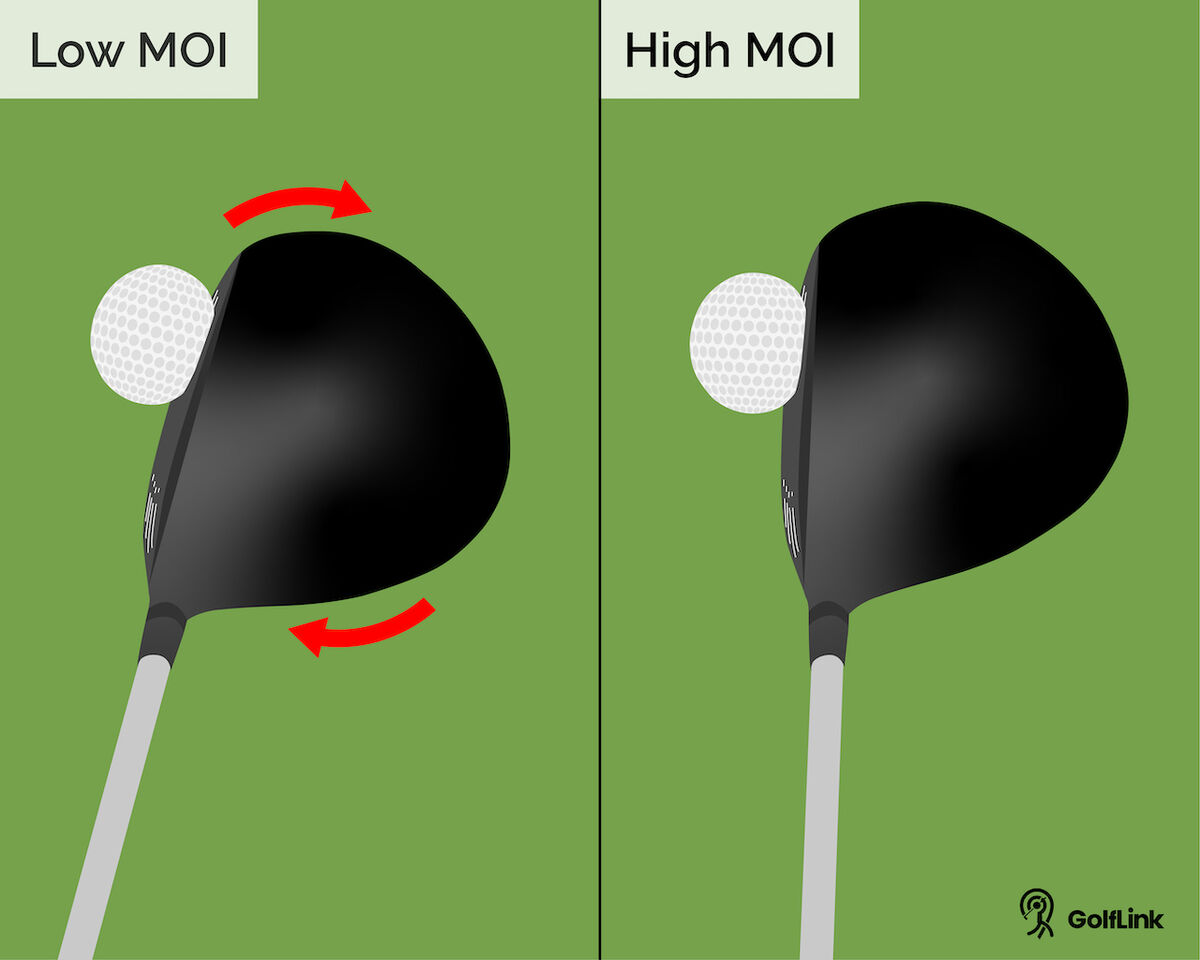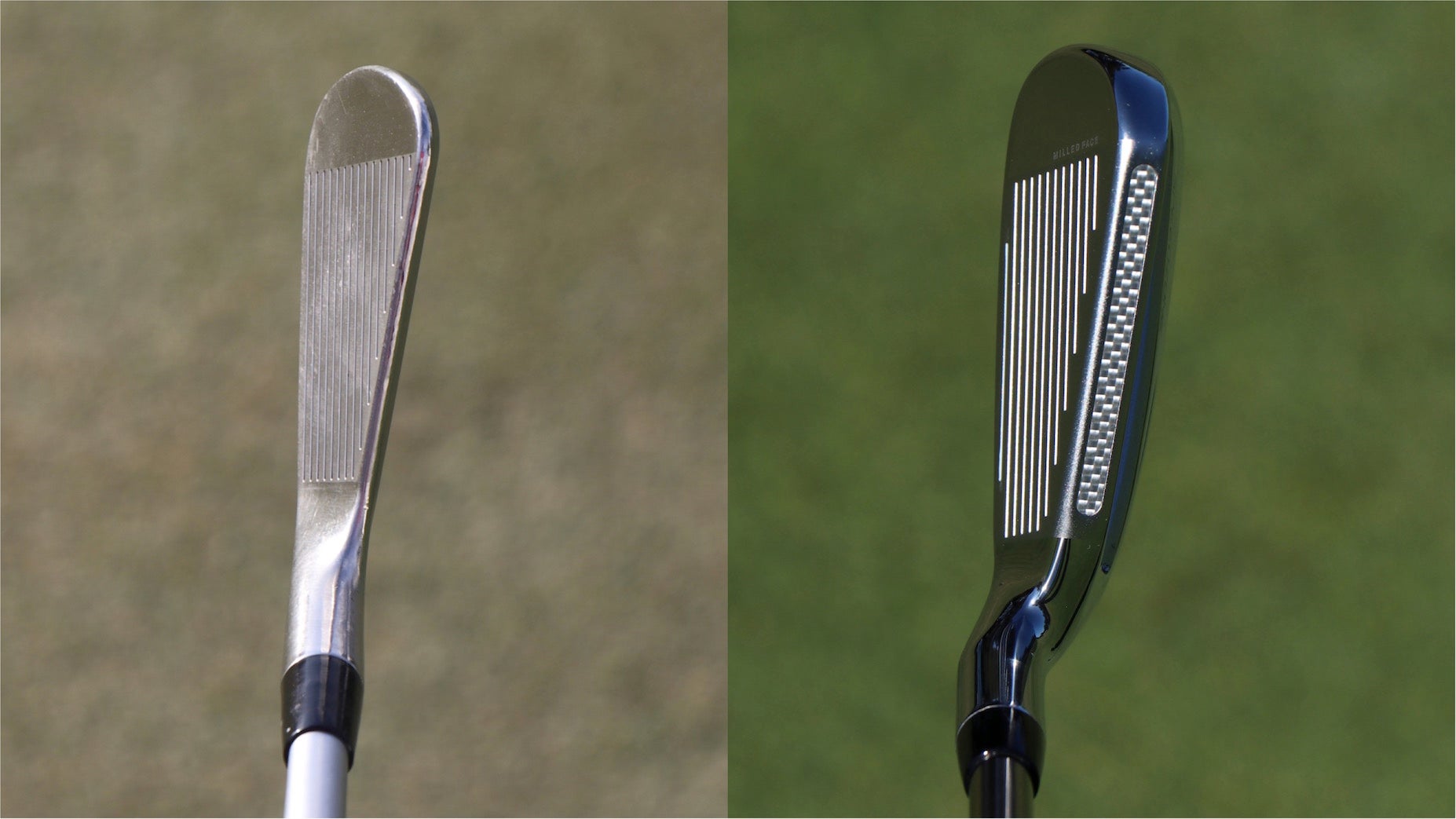As an Amazon Associate GolferHive.com earns from qualifying purchases.
What Is MOI in Golf? A Simple Guide to Forgiveness
Ever wonder why some golf clubs feel so much more stable on mishits, while others seem to punish every slight imperfection in your swing? You’re not alone. Many golfers struggle with inconsistent shots, losing distance and accuracy, without realizing the answer might be engineered directly into their clubhead. This guide will solve that mystery once and for all.
MOI, or Moment of Inertia, is a measure of a golf club’s resistance to twisting on off-center hits. A higher MOI means more stability, which golfers experience as greater forgiveness, leading to straighter shots and more consistent distances.
Leveraging extensive analysis of club design principles and performance data, this guide unpacks exactly what MOI is and why it’s the most important specification for the vast majority of golfers. We’ll break down how designers increase it, what the legal limits are, how it impacts every club in your bag—from driver to putter—and even explore the trade-offs that matter for highly skilled players. Get ready to understand your equipment like never before.
Key Facts
- The Core Equation: In golf, the simplest and most important way to think about MOI is: High MOI = High Forgiveness. This concept is a consensus across leading manufacturers and golf instructors.
- The Legal Limit: The USGA and The R&A set the legal limit for a club’s heel-to-toe MOI at 5900 g/cm², with a 100 g/cm² tolerance, as detailed in governing body regulations.
- The Design Secret: Manufacturers increase MOI primarily through perimeter weighting—placing heavy materials like tungsten at the extreme edges of the clubhead to make it more resistant to twisting, a principle famously pioneered by PING.
- It’s Not Just for Drivers: While often discussed with drivers, high MOI is critical across the entire bag. It provides stability in irons for better accuracy and in putters to help the ball roll true on off-center strikes.
- The Forgiveness Trade-Off: For highly skilled players, maximum MOI isn’t always better. Lower MOI clubs are less forgiving but offer more “workability,” allowing advanced golfers to intentionally shape shots, a trade-off noted by multiple golf science sources.
What Is MOI in Golf? A Complete Guide to Forgiveness, Feel, and Performance
MOI, or Moment of Inertia, is a measure of a golf club’s resistance to twisting on off-center hits. A higher MOI means more stability, which golfers experience as greater forgiveness.

At its core, Moment of Inertia is a physics term that quantifies an object’s resistance to twisting around an axis. When you hit a golf ball on the heel or toe of the clubface instead of the sweet spot, the clubhead wants to rotate open or closed. A club with a high MOI fights that rotation much more effectively. According to a consensus among top club manufacturers and golf performance experts, this stability is the key to minimizing the negative effects of a mishit.
The simplest way to understand this crucial concept is:
MOI = Forgiveness
Ever wonder why some clubs feel so much more stable on mishits, while others punish you? The answer is MOI. A higher MOI reading, measured in grams per centimeter squared (g/cm²), means the clubhead is more stable, preserving ball speed and direction even when your strike isn’t perfect.
Why MOI Is the Most Important Spec for Most Golfers
A high MOI club is crucial for most golfers because it increases forgiveness by resisting twisting on mishits, leading to straighter shots, more consistent distance, and a larger effective sweet spot. For amateur and high-handicap players, focusing on what is moi in golf is more beneficial than almost any other technical specification.
Think of a high MOI club like a car with a wide wheelbase – it’s just harder to tip over and stays more stable, even when you don’t hit the turn perfectly. Here’s how that stability translates to better performance on the course:
- Maximum Forgiveness on Mishits
When you strike the ball away from the center, a high MOI club minimizes the twisting of the clubface, which helps the ball start and stay closer to your target line. -
More Consistent Ball Speed
A stable clubhead transfers energy more efficiently on off-center hits. This means you’ll see a much smaller drop in distance on your mishits compared to a lower MOI club. -
A Bigger “Effective” Sweet Spot
Because the club is so stable, the area on the face that produces good results becomes much larger. You don’t have to be perfect to get a great result. -
A More Solid, Stable Feel
High MOI clubs feel more solid and powerful at impact, even on imperfect strikes, because there is far less harsh vibration and twisting transferred to your hands.
How Club Designers Engineer Higher MOI
Manufacturers increase MOI by pushing weight away from the clubhead’s center, primarily using perimeter weighting, lightweight materials like carbon fiber, larger clubhead shapes, and adjustable weights. This isn’t magic; it’s a deliberate engineering strategy to make the clubhead more stable.
Here are the primary methods used to boost the what is moi golf measurement:
- Strategic Perimeter Weighting
This is the cornerstone of high MOI design. By placing heavy materials, like dense tungsten, in the heel and toe areas and far back from the face, engineers make the clubhead inherently resistant to rotation. As noted by industry experts, this principle was famously pioneered by PING with their perimeter-weighted irons, revolutionizing club design. -
Lightweight Materials
Using materials like carbon fiber for the crown (top) or other parts of the clubhead saves a significant amount of weight. This “discretionary weight” can then be moved to the perimeter, where it has the greatest impact on increasing MOI. -
Optimized Clubhead Shape and Size
While driver head sizes are limited by the rules of golf, designers still use larger, stretched-out footprints to push mass further from the center of gravity. This larger shape naturally boosts stability and forgiveness. -
Adjustable Weight Technology
Many modern drivers, fairway woods, and even putters feature moveable weights. Golfers can shift these weights toward the perimeter to maximize MOI for ultimate forgiveness or move them to other positions to promote a specific shot shape.

Pro Tip:
Next time you look at a modern driver, notice the use of different materials. The lightweight carbon on top isn’t just for looks; it allows designers to move heavy tungsten to the edges, massively boosting MOI.
“10K MOI” and USGA Limits: What’s Legal and What’s Hype?
The USGA limits a driver’s heel-to-toe MOI to 5900 g/cm². The term “10K MOI” refers to a driver’s combined MOI across multiple axes exceeding 10,000, which is a marketing metric, while still adhering to the official USGA horizontal limit.
So, is a 10K driver illegal? Not exactly, and here’s the key difference you need to understand. The official rule governs one specific measurement, but modern marketing is talking about a combined total.
Here’s a simple breakdown based on established golf regulations and industry reporting:
| Feature | USGA Limit | “10K MOI” Term |
|---|---|---|
| Measurement Axis | Heel-to-Toe (Horizontal) | Combined (Heel-Toe + High-Low) |
| Official Limit | 5900 g/cm² (+100 tolerance) | Exceeds 10,000 g/cm² (combined) |
The USGA’s rule, limiting the MOI to 5900 g/cm² with a 100 g/cm² tolerance (for a total of 6000 g/cm²), is focused on the horizontal, or heel-to-toe, stability. This is the twisting that occurs on the most common mishits. The “10K MOI” buzzword you hear in 2025 refers to the sum of that horizontal MOI plus the vertical MOI (top-to-bottom). While it’s an impressive feat of engineering that signals incredible overall stability, the club must still conform to that crucial 5900 g/cm² horizontal limit to be legal for play.
MOI Across the Bag: It’s Not Just for Drivers
High MOI is beneficial in all clubs: in drivers for distance forgiveness, in irons (like cavity-backs) for consistent accuracy, and in putters (like mallets) to help the ball roll true on off-center strikes. The principles of stability and forgiveness apply to every shot you hit on the course.
Think about it: A mishit with an iron or putter can be just as damaging to your score as one with a driver. That’s why understanding what is moi in golf matters for your entire set.
MOI in Irons for Approach Shot Consistency
High MOI irons, often featuring cavity-back designs and perimeter weighting, resist twisting on impact to help golfers hit the ball straighter and with more predictable distances. When you miss the center of an iron face, the club can de-loft or twist open, causing you to miss the green short or offline. High MOI irons fight this tendency, leading to more consistent results and more greens in regulation. The PING irons that pioneered this technology decades ago proved just how effective this approach is for players of all skill levels.

MOI in Putters for Fewer Three-Putts
High MOI putters, especially mallets, are more stable and resist twisting on off-center strikes, helping the golf ball maintain its intended line and speed. This is crucial for eliminating three-putts.
Quick Fact: The slight twist of a putter face from a toe or heel strike is often the hidden reason for a missed 4-footer. High MOI putters are designed to fight that twist.
Here’s how high MOI makes a difference on the greens:
* High-MOI Putter (e.g., Mallet): On a toe or heel strike, the face stays squarer to the target line, and the ball rolls out closer to your intended distance.
* Lower-MOI Putter (e.g., Traditional Blade): On the same mishit, the face twists open or closed more easily, sending the ball offline and often short of the hole.
The Trade-Off: Is High MOI Always Better? (Forgiveness vs. Workability)
While high MOI offers maximum forgiveness beneficial for most amateurs, highly skilled players may prefer slightly lower MOI clubs because they allow for more “workability,” or the ability to intentionally shape shots like draws and fades. This is the essential trade-off at the heart of club selection.
Ask yourself: Is your priority to hit the ball straighter more often, or to intentionally curve it around a dogleg? Your answer points to your ideal MOI.
The reason for this comes down to something called the “gear effect.” A high MOI club resists twisting so well that it dampens this effect, keeping the ball flying straight. Skilled players, however, sometimes use a controlled mishit to engage the gear effect and produce a desired curve. A lower MOI club makes this easier to accomplish.
Here’s how player needs break down:
| Player Type | Primary Need | Ideal MOI |
|---|---|---|
| Amateur / High Handicap | Forgiveness | High |
| Skilled / Pro Player | Workability (Shot Shaping) | Lower |
Advanced Concept: MOI Matching for Ultimate Consistency
MOI matching is a club fitting method where every club in a set is built to have the same moment of inertia when swung, creating a perfectly consistent feel and required effort from one club to the next. This is a level of precision that goes far beyond standard off-the-rack sets.
MOI matching is the practice of building a set of clubs so the amount of force required to swing every single club to impact is identical. It focuses on the dynamic feel of the club during the swing, not just its static weight.
This advanced fitting technique, championed by experts like Wishon Golf and Chris Cote Golf, differs significantly from the traditional method of swing weight matching.
- Swing Weight: A static measurement of a club’s balance point. It doesn’t fully capture how a club feels in motion.
- MOI Matching: A dynamic measurement ensuring that every club, from your wedge to your long iron, requires the same effort to swing. This promotes a single, repeatable swing and can lead to vastly improved rhythm, timing, and on-center strikes.
To experience the stability of a high-MOI design on the greens, exploring some of the best mallet putters can be a game-changer.
FAQs About what is moi golf
Here are answers to some of the most common questions golfers have about Moment of Inertia.
What does MOI stand for in golf?
MOI is an acronym that stands for “Moment of Inertia,” which is a physical measurement of an object’s resistance to twisting or rotation. In golf, it’s used to quantify a clubhead’s stability and, by extension, its forgiveness on off-center hits.
What is considered a high MOI in a driver?
A high MOI in a driver is one that approaches the USGA limit of 5900 g/cm². Any modern driver marketed with a heel-to-toe MOI in the 5000s is considered to have a very high MOI and is designed for maximum forgiveness.
Is a higher or lower MOI better?
Higher MOI is better for most amateur golfers seeking forgiveness, straighter shots, and more consistent distance. Lower MOI can be better for highly skilled players who prioritize “workability”—the ability to intentionally curve the ball—over maximum stability.
What does 10K MOI actually mean?
“10K MOI” refers to a driver’s combined moment of inertia value (heel-to-toe plus top-to-bottom) exceeding 10,000 g-cm². It’s a marketing metric used to communicate exceptional overall stability, though the club must still meet the official USGA heel-to-toe limit of 5900 g/cm² to be legal for play.
Final Summary: Why Understanding MOI Will Improve Your Game
Understanding what is moi in golf is to understand the physics of forgiveness. It’s not a complicated marketing gimmick; it’s the single most important factor that determines how a club performs when you don’t make a perfect swing. By choosing equipment with an MOI profile that matches your skill level and on-course needs, you are giving yourself the best possible chance to hit better, more consistent shots. This guide has covered everything from the basic definition to advanced fitting concepts, empowering you to make smarter decisions about your gear.
Here are the most critical takeaways:
- MOI Is Forgiveness: A higher MOI value means the club is more stable and resistant to twisting, which directly translates to straighter and longer shots on your mishits.
- It Applies to Every Club: From the driver to the putter, higher MOI helps you maintain speed and direction, leading to better scores.
- It’s a Trade-Off with Workability: While most players benefit from high MOI, elite players may choose lower MOI clubs for enhanced shot-shaping control.
Now that you understand MOI, take a look at your own clubs. Are they designed to help you, or are you fighting against them? Choosing equipment that matches your needs is one of the fastest ways to more consistency and enjoyment on the course.
Last update on 2025-11-15 / Affiliate links / Images from Amazon Product Advertising API

